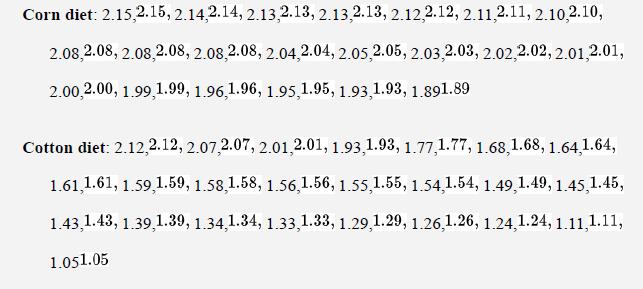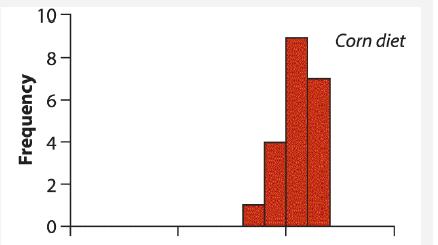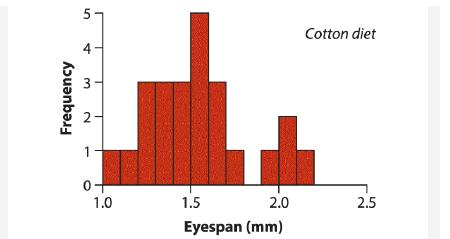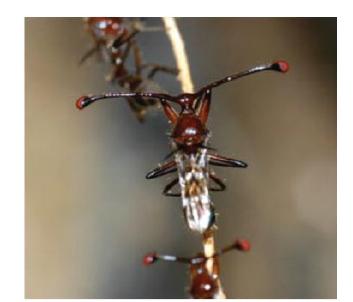The males of stalk-eyed flies (Cyrtodiopsis dalmanni) have long eye stalks. The females sometimes use the length
Question:
The males of stalk-eyed flies (Cyrtodiopsis dalmanni) have long eye stalks. The females sometimes use the length of these eye stalks to choose mates. (See Example 11.2.) Is the male’s eye-stalk length affected by the quality of its diet? An experiment was carried out in which two groups of male “stalkies” were reared on different foods (David et al. 2000). One group was fed corn (considered a high-quality food), while the other was fed cotton wool (a food of substantially lower quality). Each male was raised singly and so represents an independent sampling unit. The eye spans (the distance between the eyes) were recorded in millimeters. The raw data, which are plotted as histograms at right, are as follows:

These data can be summarized as follows, where the corn-fed flies represent treatment group 1 and the cotton-fed flies represent treatment group 2.

a. What is the best test to use for comparing the means of the two groups? Why?
b. Carry out the test identified in part (a).


Data from example 11.2

The stalk-eyed fly, Cyrtodiopsis dalmanni, is a bizarre-looking insect from the jungles of Malaysia. Its eyes are at the ends of long stalks that emerge from its head, making the fly look like something from the cantina scene in Star Wars. These eye stalks are present in both sexes, but they are particularly impressive in males. The span of the eye stalk in males enhances their attractiveness to females as well as their success in battles against other males. The span, in millimeters, from one eye to the other was measured in a random sample of nine male stalk-eyed flies. The data are as follows:
![]()
We can use these measurements to estimate the mean eye span in the fly population, and to quantify the uncertainty of our estimate using a 95% confidence interval. Assume that eye span has a normal distribution in the population.
Step by Step Answer:

The Analysis Of Biological Data
ISBN: 9781319226237
3rd Edition
Authors: Michael C. Whitlock, Dolph Schluter





